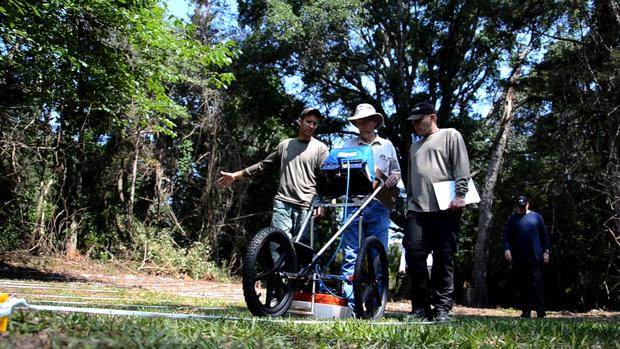Scores of deaths, graves, on grounds of former Fla. reform school, report says
(AP) TAMPA, Fla. -- Anthropologists have found evidence of 98 deaths and more graves than previously identified at a now-closed state reform school in the Florida Panhandle, according to a report released Monday.
An interim report released by the University of South Florida in Tampa says the researchers found at least 50 gravesites at the former Arthur G. Dozier School for Boys in Marianna, about 60 miles west of Tallahassee.
That's 19 more than had been identified by the Florida Department of Law Enforcement (FDLE) in a 2010 investigative report. The university's researchers also believe there may be even more gravesites than those they've found so far.
The FDLE was unable to substantiate or refute claims that inmate deaths were caused by the school's staff, or that staff members physically and sexually abused them. The school opened in 1900 and was closed last year as a cost-cutting measure.
The anthropologists, led by Associate Professor Erin Kimmerle, used historical documents to verify the deaths of two adult staff members and 96 children - ranging in age from 6 to 18 - from 1914 through 1973.
"The cause and manner of death for the majority of cases are unknown," the researchers wrote. In those cases where causes could be documented the most common were infectious disease, fires, physical trauma and drowning.
Other mortality patterns showed trends of deaths occurring after escapes and within three months of arriving at the school.
Records indicate that 45 individuals were buried on school grounds from 1914 through 1952 while 31 bodies were sent elsewhere for burial. No burial locations are listed for 22 cases.
The lack of information on who's buried at the school and how they died has led to "uncertainty, speculation, and folklore regarding these deaths," the report says.
The gravesites were found in an area known as "Boot Hill," but the anthropologists suspect there may be more burials elsewhere on the 1,400 acre campus.
Then-Gov. Charlie Crist ordered the FDLE investigation in 2008 after former students from the 1950s and 1960s claimed they and other inmates were beaten and abused in other ways. They called themselves "the White House boys" because they said the abuse took place in a small white building on the campus.
The university's report is based on archival research, interviews with former students, family members and staff, remote sensing, soil chemistry, archaeological excavation and consultation with experts in forensic pathology, fire investigation and integrative biology.
The report recommends further research including the use of ground penetrating radar in areas adjacent to Boot Hill, test excavations and the exhumation of remains for skeletal autopsies to determine causes of death.
The makeshift cemetery currently has 31 white metal crosses to mark graves, but they were installed in the early 1960s or mid-1990s long after the burials took place. The markers also do not correspond to the actual gravesites, which were not originally marked.
"Very little documentation about the history of the cemetery or who is buried there exists, and the exact locations of individual burials were never documented," the report says.
